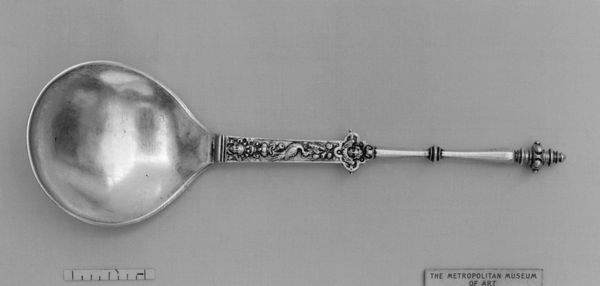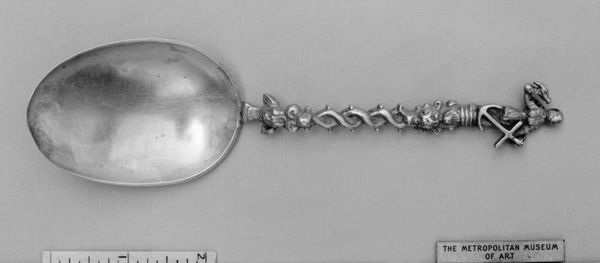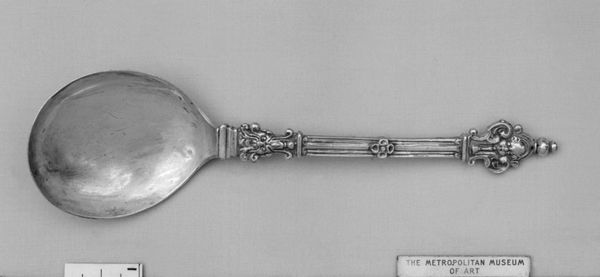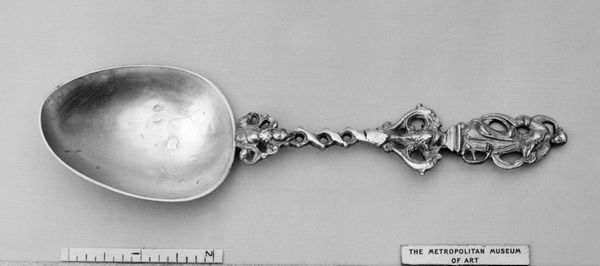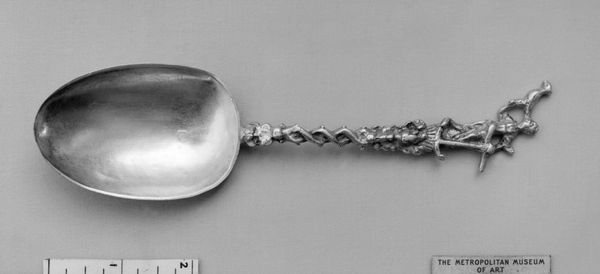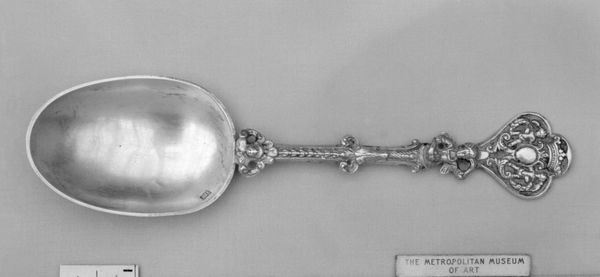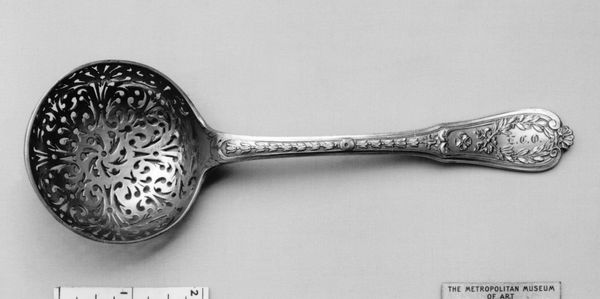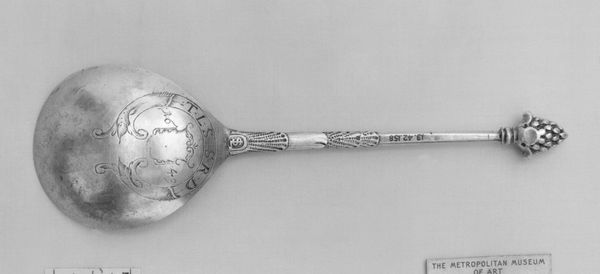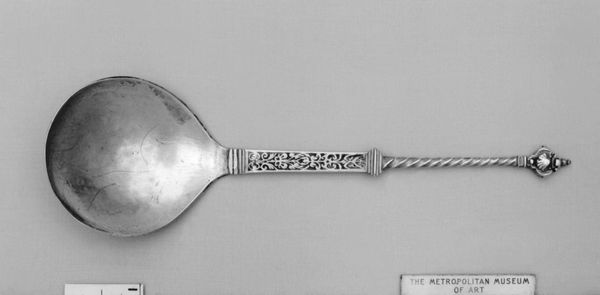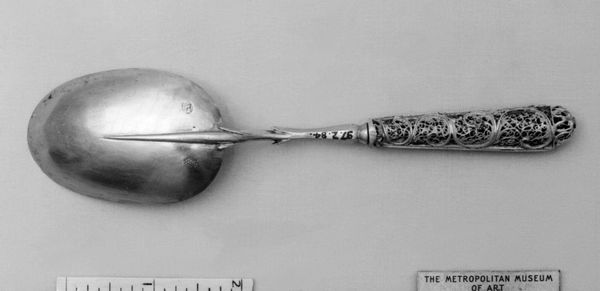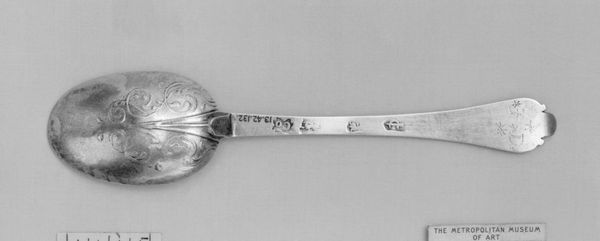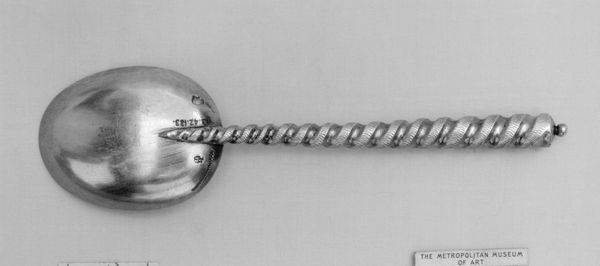
silver, sculpture
#
silver
#
sculpture
#
decorative-art
Dimensions: Overall: 6 7/8 × 2 1/4 in. (17.5 × 5.7 cm)
Copyright: Public Domain
Curator: This ornate, silver, Figure-top spoon was crafted in 1879 by Jan van Staaten and is now part of the decorative arts collection at the Metropolitan Museum of Art. What are your initial thoughts on it? Editor: Strikingly delicate work. The high polish really catches the light, accentuating the intricate ornamentation, particularly along the handle. Curator: Right. It's clearly made for display as much as utility. During this period, highly decorative silverware often symbolized wealth and social status within European society and burgeoning North American markets. Silver pieces became showpieces within middle-class dining rooms. Editor: Agreed. The weight and distribution seem considered. See how the finial creates a counterpoint to the spoon’s bowl, suggesting someone put great thought into the haptic experience of just holding the piece. Also, the way those little sculptural figures are integrated into the handle is exquisite. I'm also seeing repeating motifs—scrolls, perhaps stylized flowers... Curator: Floral and scroll motifs were immensely popular. This spoon speaks to the culture of collecting and conspicuous consumption of the late 19th century. Artists like van Staaten benefited greatly from this societal shift. Pieces such as this spoon blurred the lines between functional object and small-scale sculpture. Editor: The detailing, while quite fine, doesn't feel wholly organic to its purpose as an eating implement. The design overwhelms function slightly, making its claim as "decorative art" far more resonant than “useful object”. Curator: Precisely, and it signals a democratization of luxury in a sense. Mass production meant more people than ever could possess elaborately ornamented items, however, also changing how and by whom silver products would be viewed as objects. Editor: Seeing how its individual elements are repeated does suggest something moving towards the industrialized aesthetic, which would blossom into modern design, in many ways reacting against overdone ornamentation like this. It's interesting to see that transition gestating right here in this one spoon! Curator: A potent reminder that design always moves as society shifts. Editor: Indeed! Thank you, I find myself reassessing the spoon now.
Comments
No comments
Be the first to comment and join the conversation on the ultimate creative platform.

